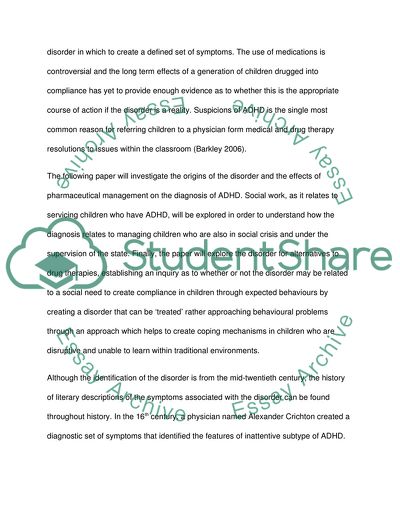Cite this document
(“Identifying Hyperactive Children: Attention-Deficit Hyperactivity Essay”, n.d.)
Identifying Hyperactive Children: Attention-Deficit Hyperactivity Essay. Retrieved from https://studentshare.org/psychology/1587283-ritically-discuss-the-concept-of-attention-deficit-hyperactivity-disorder-focussing-in-particular-on-its-evolution-as-a-psychiatric-diagnosis-and-its-pharmacological-treatment
Identifying Hyperactive Children: Attention-Deficit Hyperactivity Essay. Retrieved from https://studentshare.org/psychology/1587283-ritically-discuss-the-concept-of-attention-deficit-hyperactivity-disorder-focussing-in-particular-on-its-evolution-as-a-psychiatric-diagnosis-and-its-pharmacological-treatment
(Identifying Hyperactive Children: Attention-Deficit Hyperactivity Essay)
Identifying Hyperactive Children: Attention-Deficit Hyperactivity Essay. https://studentshare.org/psychology/1587283-ritically-discuss-the-concept-of-attention-deficit-hyperactivity-disorder-focussing-in-particular-on-its-evolution-as-a-psychiatric-diagnosis-and-its-pharmacological-treatment.
Identifying Hyperactive Children: Attention-Deficit Hyperactivity Essay. https://studentshare.org/psychology/1587283-ritically-discuss-the-concept-of-attention-deficit-hyperactivity-disorder-focussing-in-particular-on-its-evolution-as-a-psychiatric-diagnosis-and-its-pharmacological-treatment.
“Identifying Hyperactive Children: Attention-Deficit Hyperactivity Essay”, n.d. https://studentshare.org/psychology/1587283-ritically-discuss-the-concept-of-attention-deficit-hyperactivity-disorder-focussing-in-particular-on-its-evolution-as-a-psychiatric-diagnosis-and-its-pharmacological-treatment.


